| Keynotes: • Kajabi is an all-in-one solution for digital products. • ConvertKit specializes in email marketing with automation. • Kajabi suits comprehensive ecosystems; ConvertKit excels in email revenue. • Kajabi supports websites and sales funnels; ConvertKit focuses on landing pages. • Kajabi’s higher cost reflects its wider features; ConvertKit is a budget-friendly option. |
When picking the best platform to grow your online business, Kajabi and ConvertKit are usually the top choices. Both are strong tools but serve different purposes. Kajabi is an all-in-one solution that helps you create, host, and sell digital products while building a strong online presence. In contrast, ConvertKit specializes in email marketing, providing advanced automation features to help you make money from your audience.
In this detailed comparison, we’ll look at Kajabi and ConvertKit side by side to help you figure out which platform is best for your business goals. Whether you need a complete digital solution or a strong email marketing tool, this guide will give you the information you need to make a smart choice.
What is Kajabi?
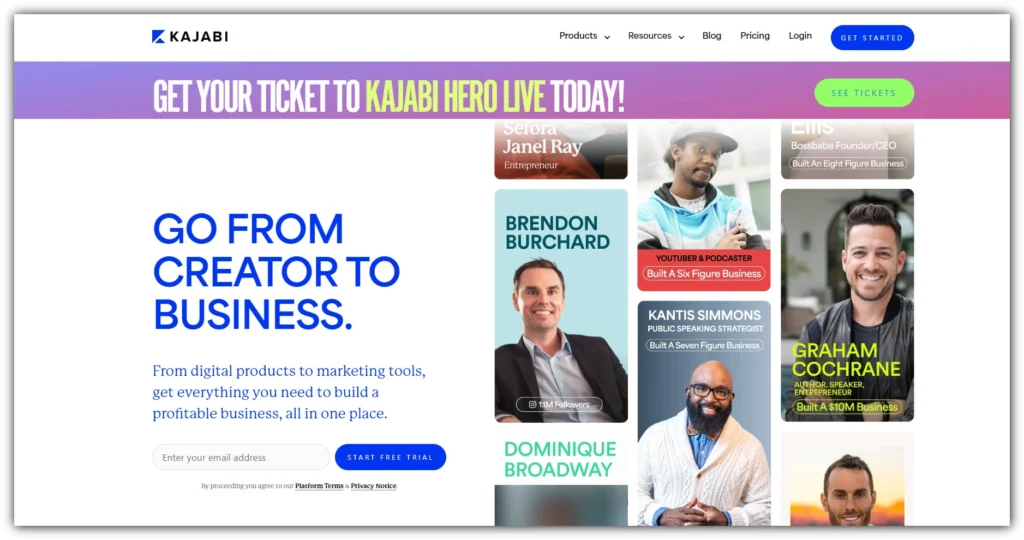
Kajabi is an all-in-one platform for creating and selling online courses, memberships, and digital products. It has gained popularity among entrepreneurs, coaches, and creators looking to create a comprehensive ecosystem for their online business.
Some of Kajabi’s notable features include:
- Website builder
- Sales funnel creation
- Course hosting and delivery
- Membership site creation
- Email marketing
- Payment processing
With Kajabi, you can host your website, create sales funnels to sell your products or services, and deliver content through online courses or membership sites. It also offers in-depth analytics to track your business growth and integrations with third-party tools like Zoom for live sessions.
If you’re looking to compare Kajabi with other marketing platforms, check out our detailed review of Kajabi vs ActiveCampaign.
What is ConvertKit?

ConvertKit, on the other hand, is a powerful email marketing tool designed for creators and bloggers. It offers advanced automation features to help you segment and personalize your email marketing campaigns. With ConvertKit, you can create beautiful landing pages to capture leads and send targeted emails based on subscriber behavior.
Some of ConvertKit’s notable features include:
- Email sequences
- Tagging and segmentation
- Landing page creation
- Automation rules
- A/B testing
With ConvertKit, you can build a strong email list by creating personalized email sequences based on your subscribers’ interests and behavior. You can also use tags and segments to further refine your audience and send targeted messages that resonate with them. The platform also offers a user-friendly interface and integrations with various tools such as WordPress, Shopify, and more.
Main Differences Between Kajabi and ConvertKit
When deciding between Kajabi and ConvertKit, it’s important to know their main differences to make the best choice for your business. Let’s look at these key differences.
1. Business Focus
Kajabi is built for businesses that need an all-in-one platform to create, manage, and market their digital products. It’s perfect for users who want a comprehensive tool that covers everything from content creation to delivery and marketing.
In contrast, ConvertKit is designed primarily for individuals who want to harness the power of email marketing to promote and sell their products. If your main goal is to grow and monetize an email list, ConvertKit is tailored to meet those needs.
2. Product Offerings
Kajabi provides great support for different digital products. Whether you’re making online courses, starting a podcast, running a coaching program, or setting up a membership site, Kajabi has the features you need to create and sell your products smoothly.
On the other hand, ConvertKit is all about email marketing and doesn’t offer tools for delivering digital products. Its main goal is to help you build and connect with your email list, making it a perfect option for creators who depend on email sales.
3. Online Presence
If you want to build your online presence, Kajabi is a great choice because it lets you create complete websites, sales funnels, and landing pages. It has many tools to help you create a professional online brand.
On the other hand, ConvertKit is focused mainly on making landing pages and doesn’t let you build full websites or sales funnels. It’s best for users who already have a website and want to focus on email marketing efforts.
So, if you need a complete solution for managing your online presence, Kajabi is the better option. But if you just want to optimize landing pages for collecting emails, ConvertKit is a good fit.
4. Cost
The prices of these platforms vary based on their features. Kajabi starts at $55 a month and offers a wide range of tools for creating products, marketing, and selling. This price is worth it because Kajabi provides everything you need in one place, making it a great choice for businesses needing a strong digital setup.
On the other hand, ConvertKit is more affordable, with a free plan for users who have up to 1,000 subscribers. This makes ConvertKit a great option for those mainly interested in email marketing and wanting a budget-friendly choice.
User Experience: Kajabi vs ConvertKit
Both Kajabi and ConvertKit are known for being easy to use. This makes them great choices for digital entrepreneurs, regardless of their experience level.
Kajabi features a clean design that is simple to navigate. It guides users step-by-step through the product creation process. With its drag-and-drop editor, you can easily build websites, landing pages, and sales funnels. Customizing each element is a breeze.
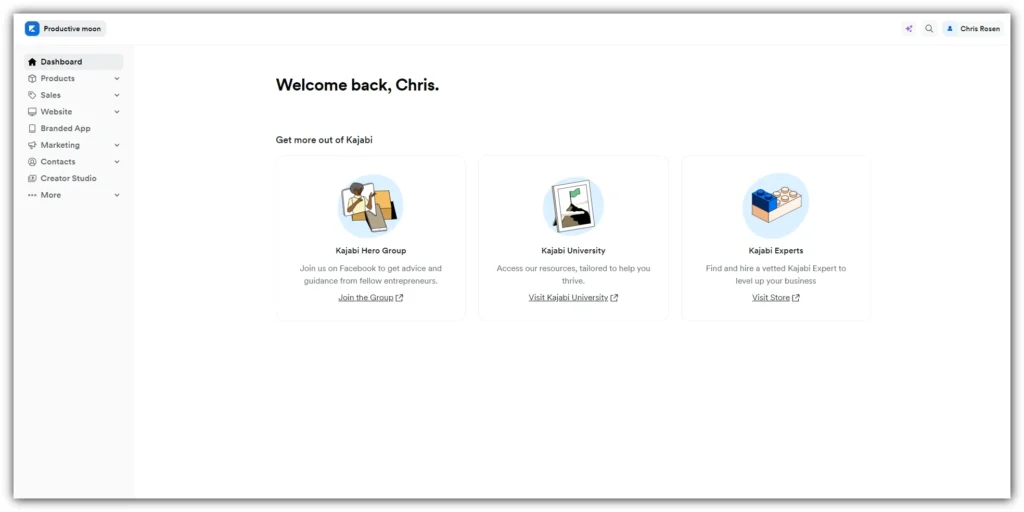
Kajabi also provides excellent support options. You can reach out via email, live chat, or webinars. Plus, there’s a comprehensive knowledge base available. This ensures you always have help when you need it.
ConvertKit focuses on simplifying email marketing tasks. The platform is user-friendly and straightforward. It offers helpful prompts and a variety of pre-designed templates for creating emails, automations, landing pages, and opt-in forms.
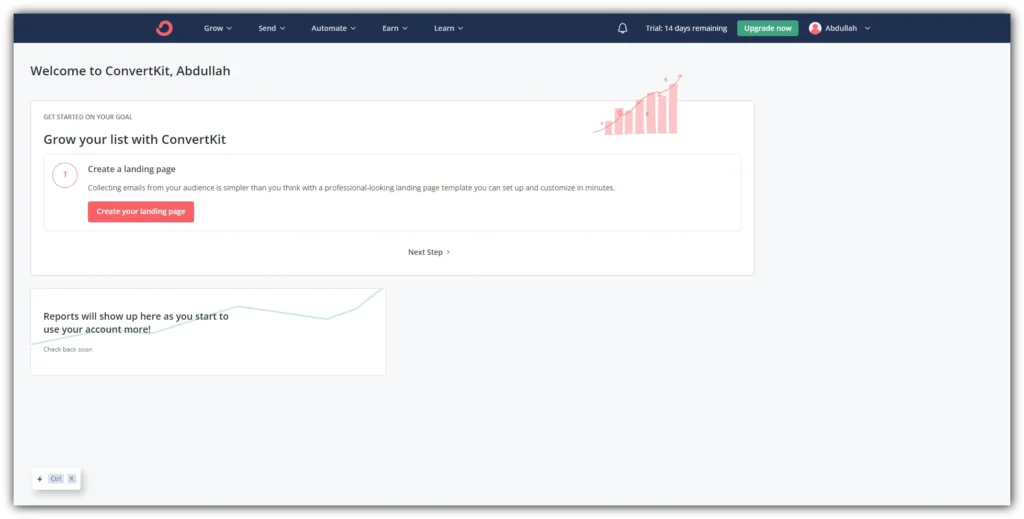
This simplicity allows users to quickly and efficiently set up and manage their email marketing without getting bogged down by technical details.
While Kajabi is known for its extensive support and intuitive design, ConvertKit’s straightforward approach and ready-made templates make it just as easy to use, especially for email marketing.
Both platforms are designed to provide a smooth experience, each tailored to their specific areas of focus.
Comparing ConvertKit and Kajabi for Websites, Landing Pages, and Funnels
Kajabi and ConvertKit both provide tools for making websites, landing pages, and sales funnels, but they do it in different ways.
Websites
Kajabi allows you to create full websites with customizable templates and designs. With its drag-and-drop builder, you can easily add elements like text, images, videos, buttons, and more. You also have the option to customize your website’s navigation menu.
ConvertKit does not offer website creation features. Instead, it focuses on providing simple landing pages that are optimized for email collection.
Landing Pages
Kajabi offers a variety of customizable templates for landing pages to capture leads or promote products. Its drag-and-drop editor makes it easy to modify these pages to fit your brand and desired design.
ConvertKit also offers landing page templates but with a more limited selection compared to Kajabi. These landing pages are designed for email capture and can be quickly set up without much customization.
Funnels
Kajabi provides a variety of funnels you can choose from, including sales funnels, product launch funnels, and webinar funnels. You can customize these funnels by adding or removing steps depending on your needs. It also allows you to create upsells, downsells, and cross-sells within the funnel itself.
While ConvertKit doesn’t have pre-made funnels like Kajabi, it offers automations that allow you to create a similar funnel structure. These automations can be used to trigger specific actions based on subscriber behavior, such as directing them to a sales page after signing up for an email list.
Curious how Kajabi stacks up against other funnel-building platforms? Explore our comparison of Kajabi vs ClickFunnels.
Selling Products: Kajabi vs ConvertKit
When it comes to selling digital products, Kajabi and ConvertKit offer different approaches, each with its own strengths.
Kajabi provides a robust platform with a comprehensive set of tools designed for building, hosting, and delivering various types of digital products. Users can create and manage a range of products including online courses, podcasts, memberships, coaching programs, and community spaces. Kajabi’s dedicated product builders guide users through each step of the creation process.

Once products are ready, they can be published and sold directly through Kajabi’s integrated websites, sales funnels, and landing pages. The platform supports flexible payment options, including one-time purchases and recurring subscriptions, allowing for a seamless sales experience.
On the other hand, ConvertKit is primarily focused on email marketing but also offers a feature for selling digital products. However, ConvertKit does not provide tools for creating or hosting these products directly on its platform.
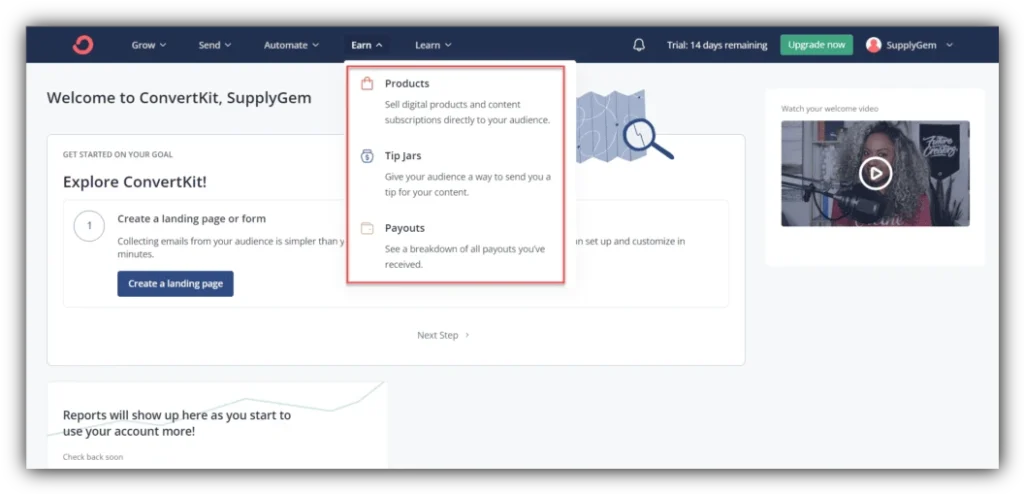
Instead, users must build their products on third-party platforms such as Kajabi, Teachable, or Podia. ConvertKit facilitates sales by integrating with Stripe for payment processing and subscription management, enabling users to connect their bank accounts for payouts and even receive tips.
While ConvertKit offers a simple way to handle transactions and manage subscriptions, it lacks the comprehensive product creation and hosting features available in Kajabi. Kajabi shines with its realistic solution for hosting, sales, and product creation, whereas ConvertKit is better suited for users who have already produced products and require powerful email marketing and transaction management tools.
If you’re considering an e-commerce platform, take a look at our comparison of Kajabi vs Shopify to find out which one is better for your needs.
Marketing Features: Kajabi vs ConvertKit
Both platforms offer robust marketing features, but they differ in their approach and capabilities.
Email and SMS
Kajabi offers a strong native email campaign feature. This allows users to easily set up email broadcasts and sequences. The platform comes with various templates for different needs, such as newsletters, special offers, product announcements, and event promotions. Users can also create custom emails using the Classic Editor, which gives them flexibility in design.
On the other hand, ConvertKit is specifically designed for email marketing. It features a wide range of templates and automation options. Users can create and save their own email templates, making it easier to craft future campaigns.
ConvertKit’s automation capabilities allow users to build email funnels. These funnels guide customers through a series of steps. Users can choose to broadcast, schedule, or automate their email content. Its focus on monetizing email lists makes ConvertKit particularly strong in the realm of email marketing.
Automation
Kajabi’s automation tool is packed with features using ‘when’ and ‘then’ logic. Users can set triggers for various actions, like course enrollments, assessments, or email sequences. This lets them automate responses such as offers, certificates, and email sequences. For example, you can automatically send course completion certificates with ease.
On the other hand, ConvertKit’s automation is also powerful but mainly focuses on email sequences. It consists of three key elements: the event, which triggers actions based on specific tags; the action, which enrolls users in email sequences; and the condition, which modifies the sequence pathway. While ConvertKit is highly effective for email marketing, it doesn’t cover broader tasks like course management or event automation.
Kajabi offers detailed automation for various processes, whereas ConvertKit provides sophisticated tools specifically for email marketing. Your choice between the two will depend on whether you need a platform for optimizing email marketing or one that offers a wide range of automation features.
Integrations: Kajabi vs ConvertKit
Both Kajabi and ConvertKit offer integrations with a variety of third-party apps and tools to help you streamline your business processes.
Kajabi Integrations

Kajabi supports over 15 native integrations, allowing users to connect seamlessly with various third-party platforms. This includes popular tools for:
- Email Marketing: Aweber, ActiveCampaign, Drip, ConvertKit, MailChimp
- Sales and Payments: Stripe, PayPal, CloudFlare
- Analytics: Google Tag Manager, Google Analytics, Segment, Meta Pixel
- Additional Tools: Zapier, Calendly, Acuity, Typeform
These integrations enable Kajabi users to connect with different payment processors and automation tools, enhancing their ability to manage and streamline their business operations. Despite being an all-in-one platform, Kajabi’s integration options provide flexibility for users who want to expand their toolkit.
ConvertKit Integrations
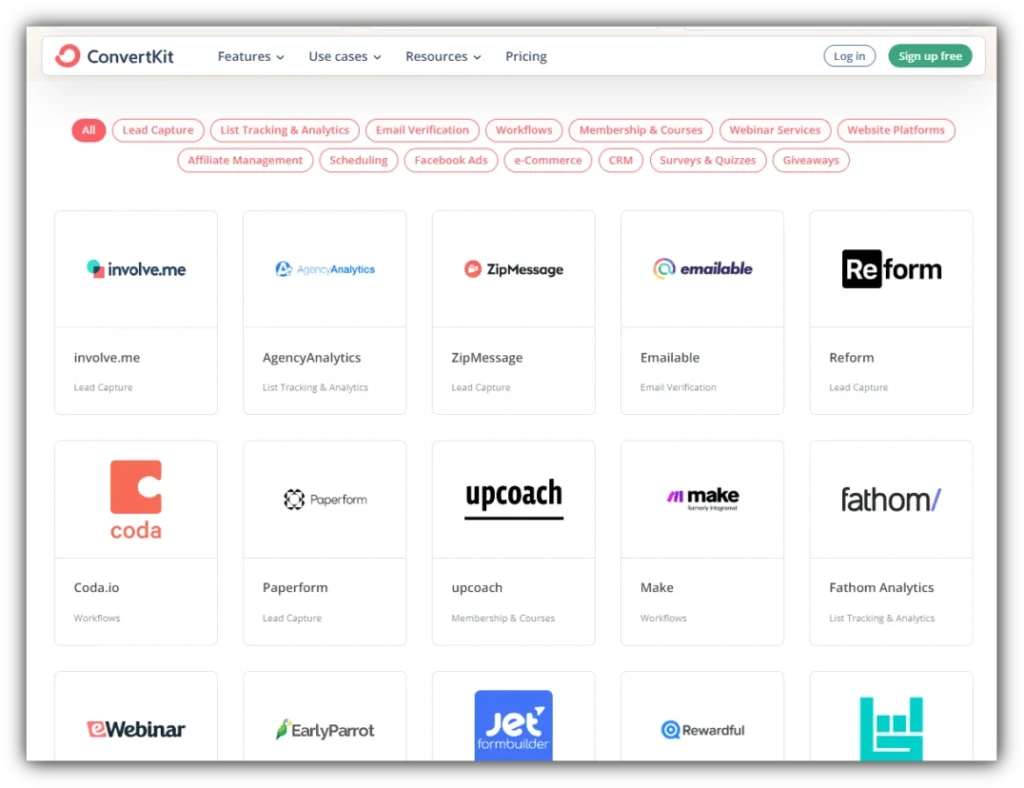
ConvertKit offers an immense variety of native integrations, and through Zapier, users can connect to thousands of additional third-party platforms. Some of the key integrations include:
- Lead Capture: Unbounce, Sumo, Reform
- Workflows: Zapier, Make
- Memberships and Courses: Teachable, Thinkific, MembersPro
- E-Commerce: Stripe, Shopify, SamCart
While Kajabi provides comprehensive integration options, ConvertKit’s extensive list of native integrations and compatibility with numerous other platforms through Zapier gives it an edge. ConvertKit’s integrations are particularly robust in areas like lead capture, e-commerce, and course management.
Although Kajabi covers essential integrations and works well within its all-in-one ecosystem, ConvertKit stands out with its broader selection of native integrations, making it the superior platform in this regard.
Reporting and Analytics: Kajabi vs ConvertKit
Both platforms offer reporting and analytics features to help users track their performance and make data-driven decisions. However, there are some key differences in how they approach this aspect.
Kajabi Reporting and Analytics
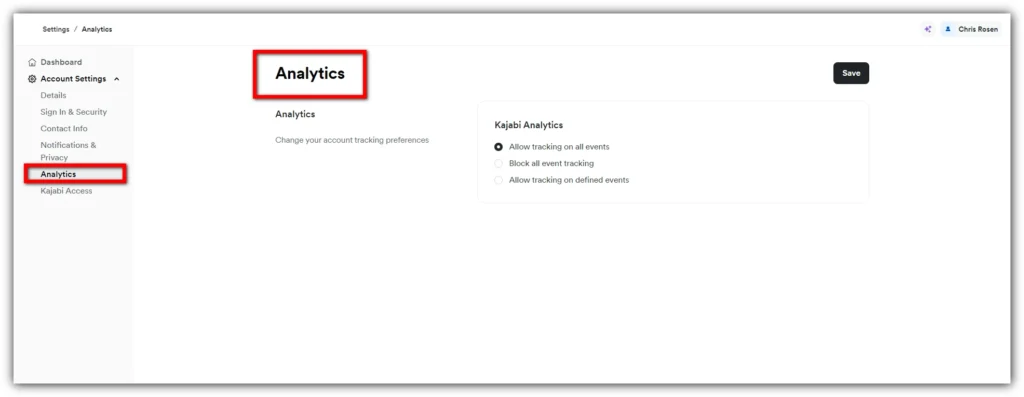
Kajabi offers a comprehensive suite of reporting and analytics tools designed to provide detailed insights into various aspects of your digital business. Users can track:
- Revenue Metrics: View net revenue and subscription metrics to gauge financial performance.
- Product Performance: Monitor statistics such as course completion rates, progress, and offers sold.
- User Engagement: Track opt-ins, page views, and affiliate performance.
These metrics allow Kajabi users to gain a thorough understanding of their product’s performance and overall business health, making it easier to make data-driven decisions.
ConvertKit Reporting and Analytics
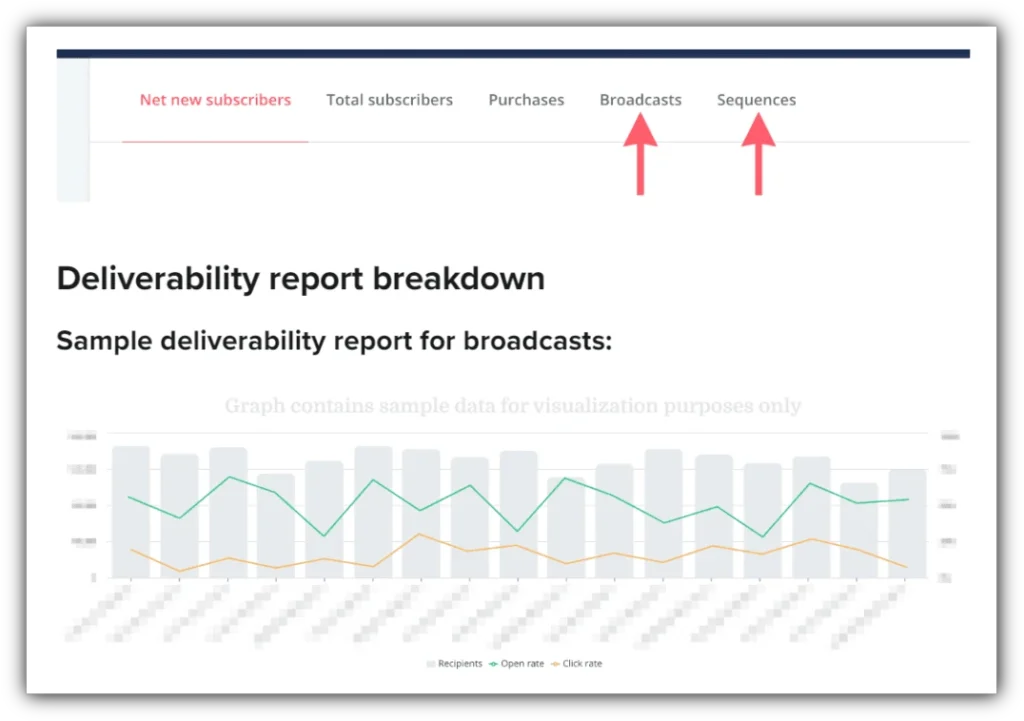
ConvertKit includes Advanced Reporting for users on its premium plan, offering insights into:
- Email Metrics: Track open rates, click rates, and deliverability.
- Subscriber Metrics: Monitor new subscribers and overall subscriber growth.
For users not on the premium plan, ConvertKit allows integration with Google Analytics to access additional data. The platform also provides payment reports that summarize total revenue and revenue per product.
While ConvertKit offers useful email-focused analytics and integrates with Google Analytics for broader insights, Kajabi’s extensive range of reporting tools provides a more complete view of business performance across various dimensions.
Kajabi’s advanced and comprehensive analytics capabilities make it a superior choice for users needing detailed reporting on multiple aspects of their digital products and business performance, compared to ConvertKit’s more specialized email analytics.
Support and Migration: Kajabi vs ConvertKit
When it comes to support and migration, both Kajabi and ConvertKit offer different levels of assistance for their users.
Kajabi Support and Migration
Kajabi offers a variety of support options to assist users, though it does not have a dedicated migration tool. Instead, Kajabi provides:
- Kajabi Hero Group: A community where users can connect and share experiences.
- Kajabi University: A resource hub with detailed tutorials and educational materials.
- Kajabi Webinars: Live sessions where users can learn and ask questions in real time.
In addition to these resources, Kajabi also offers live chat and email support, ensuring users have multiple avenues to seek help and resolve issues.
ConvertKit Support and Migration
ConvertKit provides a specific migration tool for transitioning to its platform, but this tool is available only to paid subscribers. In addition to migration support, ConvertKit offers:
- Live Chat: Available to paid users for real-time assistance.
- Email Support: Accessible for resolving issues and answering questions.
ConvertKit’s migration tool is a significant advantage for users moving from other platforms, as it facilitates a smoother transition. Combined with live chat and email support, ConvertKit ensures that users have effective means of getting help during and after migration.
Affordability: Kajabi vs ConvertKit
Pricing is an essential factor for any digital business, and both Kajabi and ConvertKit offer various subscription plans to cater to different needs.
Kajabi Pricing
Kajabi offers a range of pricing plans tailored to different business needs, with five main subscription tiers:
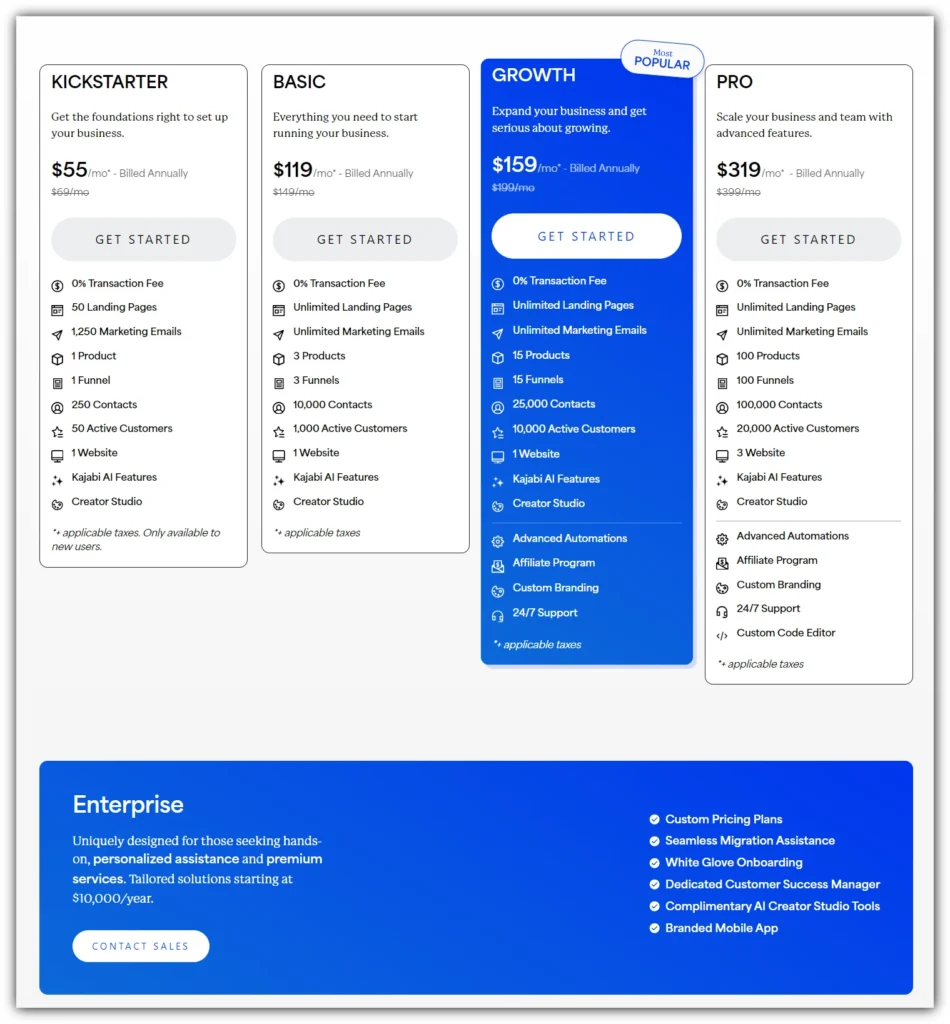
- Kickstarter Plan: $55/month
- Basic Plan: $119/month
- Growth Plan: $159/month
- Pro Plan: $319/month
- Enterprise Plan: Custom pricing (starting at $10,000/year)
Each plan offers different features and limits for products, contacts, and members. Kajabi also offers a 30-day free trial to test out the platform before committing to a subscription.
ConvertKit Pricing
ConvertKit’s pricing is based on the number of subscribers, with three main plans:
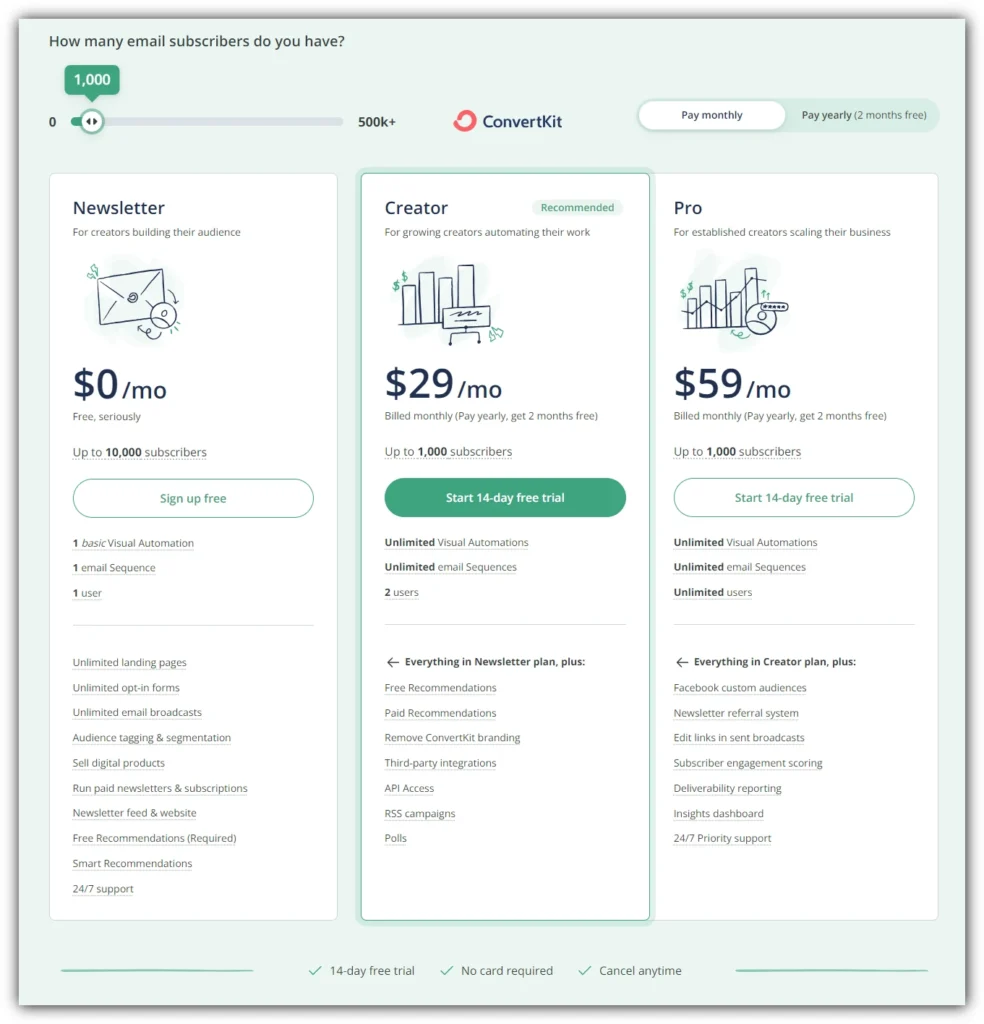
- Free Plan: Up to 1,000 subscribers
- Creator Plan: $29/month for up to 1,000 subscribers
- Pro Plan: Starting at $59/month for up to 2,500 subscribers
ConvertKit also offers a discount for annual subscriptions, as well as a 14-day free trial for new users.
When it comes to affordability, ConvertKit’s pricing plans are more accessible and affordable for smaller businesses with fewer subscribers. However, Kajabi’s higher-priced plans offer more features and capabilities, making it a better option for larger businesses or those looking for an all-in-one solution.
Conclusion
Our review shows that Kajabi is the premier choice for businesses seeking a comprehensive all-in-one platform. It offers a wide collection of tools for product creation, marketing, and powerful drag-and-drop builders for designing stunning websites, funnels, and landing pages. Kajabi’s extensive features make it an excellent solution for those needing a complete system.
However, if your focus is solely on monetizing and marketing to an existing email list, Kajabi’s higher cost might be excessive. In this case, ConvertKit emerges as a strong alternative. It specializes in email marketing and integrates effectively with existing digital or physical product businesses. ConvertKit provides a more cost-effective solution if email marketing is your main concern.
Overall, Kajabi is ideal for those needing a full-featured platform, while ConvertKit offers a more budget-friendly option for email-centric strategies.
Ready to experience Kajabi? Sign up for a Kajabi 30-Day Free Trial today!
Frequently Asked Questions
Does ConvertKit Have the Same Features as Kajabi?
No, ConvertKit mainly focuses on email marketing. It helps users make money from their email lists and connect with other platforms to promote products. On the other hand, Kajabi provides a complete solution for creating, hosting, and selling digital products like courses, coaching, podcasts, and memberships.
Is Kajabi Better than ConvertKit?
Kajabi provides a broader range of features compared to ConvertKit. Kajabi users can build and manage courses, coaching programs, podcasts, memberships, and more, in addition to creating websites, funnels, and landing pages. ConvertKit does not offer these extensive capabilities.
Is ConvertKit Cheaper than Kajabi?
Yes, ConvertKit is generally more affordable. It offers a free plan for up to 1,000 subscribers and its paid plans are priced based on the number of email contacts. Kajabi’s pricing starts at $55 per month, making ConvertKit a less expensive option in most cases.
Should I Use Kajabi or ConvertKit?
Pick Kajabi if you want a platform to create, host, and sell digital products. Choose ConvertKit if you’re mainly interested in email marketing. Your choice should depend on what you need.
Is Kajabi Easier to Use than ConvertKit?
Kajabi and ConvertKit are both easy to use, with simple dashboards and support options like email and chat. Each platform provides tips and help features to guide users in making content.
Can I Use Kajabi or ConvertKit for Free?
ConvertKit has a free plan for users with up to 1,000 email contacts. Kajabi doesn’t offer a free plan, but you can try it out for free for one month with the Kajabi 30-Day Free Trial.